STEM Picture Books 2016
By Katie L. Burke, Dianne Timblin
This year brought a multitude of excellent science-influenced picture books. Here are a few we think would make especially good gifts—or provide excellent ways to use that gift card tucked in your stocking.
December 21, 2016
Science Culture Communications Review Scientists Nightstand
Below you’ll find two books with very different, equally interesting takes on data visualization; four titles that explore systems and patterns, each emphasizing the underlying science and math in its own way; and two volumes that mix art and science, to the benefit of both.
For more reading and gift ideas, check out our complete list of 2016 gift guides—there you’ll find something for science fans of all ages. If you’d like to check out more recommendations, we have lists for 2015 and 2014 too.
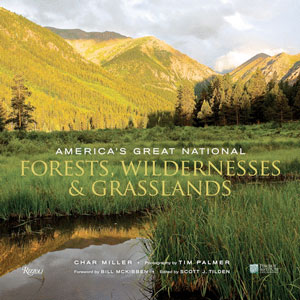
America's Great National Forests, Wildernesses, and Grasslands. Written by Char Miller; photographs by Tim Palmer; edited by Scott J. Tilden. Rizzoli, 2016. $50.
During the winter, my disposition as a reader enters a kind of hibernation phase. It’s not that I don’t want to read—quite the opposite. I like to drag a nice stack of books into my den, preferably ones that give me plenty to think about and allow me to dream of places I’d like to go once the days lengthen and the weather warms up a little. Books that happen to be beautifully written ascend to the top of the stack. America’s Great National Forests, Wildernesses, and Grasslands deserves top-of-stack status for anyone similarly inclined. Tim Palmer’s photographs of these remarkable public lands are beautiful—yet as a photographer he does so much more than produce beauty shots. For all the grandeur the images can’t help but capture, there’s something understated, something still and quiet about this collection. Palmer attends to the details. A dusting of springtime snow on the conifers beside the Middle Fork Stanislaus River in Stanislaus National Forest proves more evocative than massive drifts would have been. In Nez Perce–Clearwater National Forest, the Selway River’s energetic rapids are offset by low-slung storm clouds that nearly meet the river’s surface. A stand of cottonwoods in the Bridger-Teton National Forest is barely illumined, the sun having reached only edges of the trees’ autumn-yellow leaves, which gleam like great tufts of goldenrod. Char Miller’s text, beyond the sheer expertise it conveys (no scholar exceeds Miller’s knowledge of the U.S. Forest Service and its 106 years of history) is a pure pleasure to read. The historical context he provides, as well as his discussions of managing public lands from one region to the next, enriches the experience of viewing Palmer’s photos. Conversely, as Miller observes, Palmer’s images vividly depict why a cookie-cutter approach to managing public lands will never work—the nature of these lands is just too various, the needs too site-specific. Palmer’s photos also reveal that this very diversity of landscapes and ecosystems is what makes America’s public lands an American treasure. —Dianne Timblin
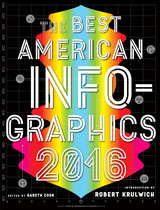
The Best American Infographics 2016. Gareth Cook, ed. Best American Infographics series. Mariner, 2016. $20.
The fourth of an annual series founded by Pulitzer Prize–winning journalist Gareth Cook, this sleek volume presents an absorbing array of infographics published in 2015. Following the same pattern as previous titles in the series, the 2016 version is divided into broad categories titled “You,” “Us,” and “Material World.” Drawn from both online and print sources, some of the infographics are likely to be ones you’ve seen. Regardless, it’s terrific to revisit gems such as Mark Edmond’s “Occupations at the Ballot Box” rendered so attractively on these large-format pages; it’s interesting too to see how interactive elements have been reconfigured to suit the printed page. For everyone but the most avid infographics seekers, these pages will hold new discoveries too. I was especially taken by how David Taylor demonstrates changes in song titles over the years by examining the frequency with which key words appear. And I’ll admit that “Sketch Artists in Chief,” which charts and assesses presidential doodles, and “How the Pope Rolls,” described as “a gallery of popemobiles past and present” had my rapt attention. It’s a bingeworthy collection, but beyond that it also illustrates how effective infographics can be in presenting complex and difficult data. Sometimes the information is conceptually complicated, as with “A Centennial Look at Relativity’s Influence.” Other times it's emotionally wrenching, as with an infographic that conveys the scale of the Syrian disaster by charting its death toll rendered as a pointillist image of the Syrian flag. Throughout, the works included in The Best American Infographics 2016 make the argument that a picture can indeed do the work of thousands and thousands of words. —Dianne Timblin

Dear Data. Giorgia Lupi and Stefanie Posavec. Princeton Architectural Press, 2016. $35.
The Dear Data project, a collaboration between information designers Giorgia Lupi and Stefanie Posavec, has received quite a bit of attention, and rightly so. It’s that rare bird of data-based projects: high-concept, inviting, and great fun. It started in 2014 when Lupi and Posavec decided to exchange weekly hand-drawn, data-driven postcards. Each Monday they’d agree on a topic; then both women would capture data independently over the subsequent days, use the data to create postcard-sized visualizations, and send their creations across the Atlantic to each other. Princeton Architectural Press was wise enough to collect the project’s postcards in book form, and it’s a delightful read. The topics used as prompts produce all sorts of results—informational, visual, and personal. When each records what kinds of sounds they hear, with Lupi based in New York City and Posavec in London, it’s interesting to see the similarities (coffee machines, birdsong) and differences (for Lupi, the sounds of people typing, high heels, a helicopter; for Posavec, rustling newspapers and a steel drum band). When the two track their romantic partners’ behavior and record actions that incite either positive or negative feelings within Lupi and Posavec themselves, the process spurs introspection for both. Posavec became wrapped up in the ethical dilemma of recording someone’s behavior without their knowledge. (The authors did inform their partners once they’d collected the data. After showing them the week’s results, the authors asked permission to share it; both partners agreed.) Lupi discovered that her partner’s actions elicited positive reactions in her much more often than she’d known. When realized she’d been taking her sweetheart’s kindness partly for granted, she came to appreciate him more. In the end, Dear Data revels—data point by data point, week after week—in the creativity and individuality involved in gathering, interpreting, and presenting information. —Dianne Timblin
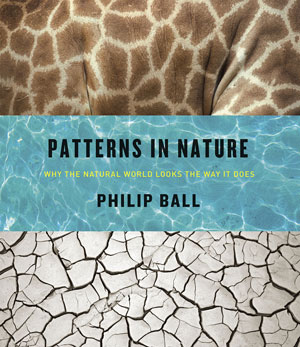
Patterns in Nature: Why the Natural World Looks the Way It Does. Philip Ball. University of Chicago Press, 2016. $35.
Philip Ball is a masterful writer, whose science-inflected body of work includes such wide-ranging titles as Serving the Reich: The Struggle for the Soul of Physics under Hitler, Curiosity: How Science Became Interested in Everything, Critical Mass: How One thing Leads to Another, and Bright Earth: Art and the Invention of Color. Still, nature’s patterns would seem to be an obsession for Ball: This book is the fifth one he has dedicated to the topic since 2001, a happy circumstance for readers. The introduction of this latest foray provides the Richard Feynman quote that binds the works together and inspired the title for the first of these volumes, The Self-Made Tapestry: “Nature uses only the longest threads to weave her patterns, so each small piece of her fabric reveals the organization of the entire tapestry.” He updated this work in 2009 with a trilogy of books collected under the series title Nature’s Patterns: A Tapestry in Three Parts. In his review of the trilogy, American Scientist senior contributing writer Brian Hayes rightly pointed out that the muddy image reproductions (which were sharper in the original volume) did not do justice to Ball’s prose. Patterns in Nature addresses that flaw, and in high style. It’s a far less detailed work than its predecessors, but the principles are presented in well-organized chapters on topics such as symmetry, fractals, spirals, waves and dunes, cracks, and spots and stripes. And the sumptuous color images are what Ball’s prose has merited all along. For those interested in nature’s patterns and their properties, this book provides a handy presentation of the basics, is a great read, and makes for a fine introduction to Ball’s other books on the subject. If readers find themselves sharing Ball’s obsession, he supplies suggestions for further reading as well. —Dianne Timblin
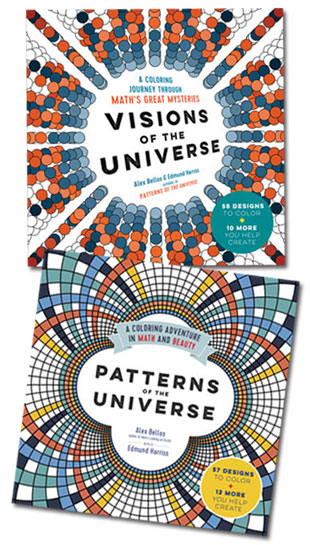
Patterns of the Universe: A Coloring Adventure in Math and Beauty. Alex Bellos and Edmund Harriss. The Experiment, 2015. $14.95.
Visions of the Universe: A Coloring Journey Through Math’s Great Mysteries. Alex Bellos and Edmund Harriss. The Experiment, 2016. $14.95.
Coloring books for adults are having a moment, and while I haven’t been drawn to most of them, these books by mathematicians Alex Bellos and Edmund Harriss are an exception. I loved the concept of learning more about math through art. Visions of the Universe delves into mathematical discoveries and mysteries, many of which are still under exploration by contemporary mathematicians. Concepts I might have struggled with in the pages of a textbook—for example, Gaussian primes, the Collatz conjecture, graph theory, and reaction-diffusion systems—became immediately interesting and were anything but overwhelming. Patterns of the Universe explores the beauty of math, presenting such concepts as the golden ratio, Fourier transforms, randomness, and Voronoi diagrams. Each book is divided into two sections and encourages a particular activity: first, coloring readymade patterns and, second, creating patterns by exploring randomness or a specific pattern. The latter category is especially engaging. The “Megadoku” activity, for example, found in Patterns of the Universe, presents the concept of Sudoku—where a number from a set is included in each row and column but never repeated in a row or column—as a color-by-number exercise. Random walks and cellular automatons are also explored as pattern-generating activities, and no two book owners will end up with the same piece of art. The book is full of ingenious and enjoyable ways to teach and learn math, making it a great resource for math educators. As I went through the book, I kept thinking how many interesting ideas it offers for quilters and mosaic artists as well. And for those who find intricate coloring books relaxing, this book is sure to be well loved. —Katie L. Burke
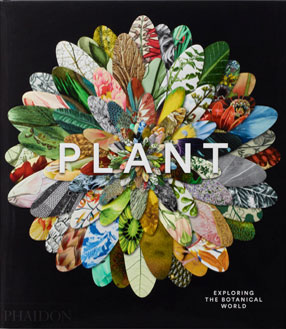
Plant: Exploring the Botanical World. Phaidon editors. Phaidon, 2016. $59.95.
Simply put, this is one of the most gorgeous books I’ve seen all year. Its concept is elegant and simple: Each spread of these ample, glossy pages juxtaposes a pair of botanical artworks bound in some way by a common thread. Sometimes the connection is straightforward—a cross-section of a flower, for example, presented first in an early 20th-century watercolor-and-pencil drawing and then in a tinted image from 2007 that was created using a scanning electron microscope. Side-by-side nursery catalogue covers, one from 1730 and the other from 1899, are striking in their contrasts: Both are beautiful, but they’re so different from one other that it’s not apparent the illustrations actually serve the same purpose. Other pairings draw subtle comparisons. At first it’s not clear why Stan Kelly’s vivid watercolor of cabbage gum branches appears beside Jean-Baptiste Huynh’s spare black-and-white photograph of a eucalyptus sprig. The captions (which are excellent and informative throughout) reveal the connection: In each case the visual force of the composition derives largely from an emphasis on angularity. Kelly’s branches slant along a strong, unexpected diagonal, and Huynh’s twig emerges as a bold vertical element against a muted gray background, its flat, perpendicular leaves outstretched. This shared compositional approach isn’t something I’d have noticed had I encountered the images separately or had I not been guided by the deep captions—which, often enough (in an editorial move that made me very happy as a reader), simply imply a connection, allowing the reader to make the full leap themselves. Plant, with its dual emphasis on botany and art, is a book that encourages readers to look more searchingly and think more deeply, even as they steep themselves in page after lovely page. —Dianne Timblin
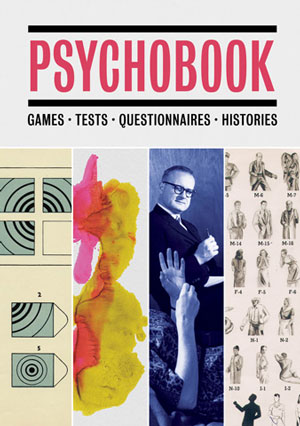
Psychobook: Games, Tests, Questionnaires, Histories. Julian Rothenstein, ed. Princeton Architectural Press, 2016. $40.
A coffee-table book about psychological tests is a bit of an odd duck. But in the case of Psychobook it’s a darn interesting duck—more of a Daffy or Disco, say, than a Donald Duck. The book opens with classic psychological and personality tests dating from the first half of the 20th century. In several places these pages serve as a bracing reminder of how far the field has come. Yet beyond the expected lists of questions and rows of tickboxes, the tests as artifacts are a revelation. I was delighted by photographs of measures, such as the Lowenfeld Mosaic Tests and the Intelligence and Perceptual Speed Tests, packed in their cunning carrying cases like peddlers’ samples. And the Modernist aesthetic of painted blocks used for the Psychological and Intelligence Test Kit for Children, as well as for sets of illustrated cards used in the McAdory Art Test, knocked my socks clean off. Latter portions of Psychobook take a creative turn: The editor commissioned contemporary writers and artists to come up with their own tests. There are updated, freshly envisioned versions of older tests, as well as tests that have been invented whole cloth; response keys are included too. It’s good entertainment, and some of the new tests might be a hoot at family get-togethers. As you might expect, many of the exercises confirm what you already know about yourself. (When I took the updated version of the Feeling Test, for example—in which you consider several dozen cartoon figures gamboling about a shopping center and select the one you most identify with—I suspect it would surprise exactly no one that I chose the smiling figure reading a book on the stairs. The test is included as something of a lark; nonetheless, I was relieved to see that my chosen figure keyed to the term unique. I was expecting incorrigible dreamer.) Still, you may be spurred on to deeper insights as well. The book includes a commissioned update on the Rorschach test, and I’d expected it to be just good silly fun. Instead, it took me by surprise. Some of my responses aligned fairly closely with possibilities presented in the key, and the feedback was interesting enough; a few others didn’t correspond with anything in the key, which was fine too. But the feedback offered for my interpretation of the final inkblot transfixed me: For that moment my professional skepticism dissolved, and I felt a spark of startled, gratified recognition. —Dianne Timblin
American Scientist Comments and Discussion
To discuss our articles or comment on them, please share them and tag American Scientist on social media platforms. Here are links to our profiles on Twitter, Facebook, and LinkedIn.
If we re-share your post, we will moderate comments/discussion following our comments policy.